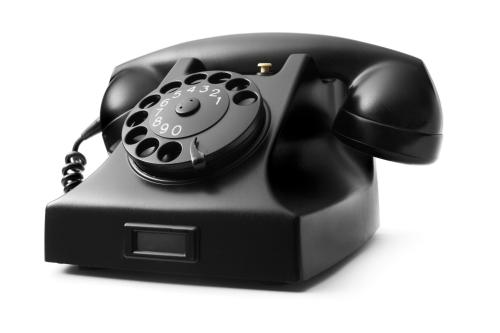Historical background
As we will see later, television as such emerged in the twentieth century, although part of the technological base on which it is based is found in the nineteenth century.
A very prolific period in great technological inventions that changed forever the societies and ways of communication of mankind and among which we can include:
- The telephone, whose authorship has been surrounded by controversy for decades, disputed by Alexander Graham Bell (who published the patent in 1876) and Antonio Meucci (who built the first ‘telephone’ in 1854, and who received in the XXI century the official paternity of the invention after a resolution of the U.S. Congress). Those of you who are interested in this subject can read more about it in the following article of our blog about the history of the telephone.
- Radio, that great means of mass communication that many predicted would disappear with the rise of television and whose day is commemorated on February 13.
- Photography, which originated in the daguerreotype at the beginning of the 19th century, a germ of such importance that the day on which it was presented in 1839, specifically on August 19 before the French Academy of Sciences, is the date chosen to commemorate annually the World Day of Photography.
Who invented television and in which year
But going back to television, answering the question of who invented it and when is not simple and probably the most appropriate thing to say would be that there is no single person responsible, since it is an accumulation of different advances, contributions and innovations by various inventors.
Perhaps the most recurrent name when speaking of the inventor of television is that of the Scotsman John Logie Baird (1888-1946), although his advances would have been impossible without the German engineer Paul Gottlieb Nipkow (1860-1940).
The Germanic is one of the pioneers of television with the invention of a disk named after him, which consisted of a disk and a light source with a series of quadrangular spiral holes.
First television broadcast in history
On this basis, Baird was able to synchronize two Nipkow disks on a single axis, being the inventor of electromechanical television and making history on October 2, 1925 with the first television broadcast in history: one of the disks as transmitter and the other as receiver projected the head of a doll, although this historic broadcast was reduced to a London laboratory. The following year, in 1926, Baird also produced the first public demonstration of moving images in front of an audience.
As was the case with other technological advances mentioned above, television was not exempt from patent-related controversies either.
The engineer Vladimir Zvorykin (1888-1982) invented the iconoscope (considered the predecessor of television cameras), an advance that together with the cathode ray tube system made it possible to improve the resolution and speed of broadcasts, advances patented by David Sarnoff (1891-1971), then president of RCA.
However, these advances met with the presentation in 1927 of the first fully electronic television, something that had Philo Farnsworth (1906-1971) as the person responsible. And yes, Futurama fans, Professor Hubert Farnsworth is a tribute to this inventor…
But back on television, the situation escalated into a patent fight because while Farnsworth had previously developed it, Sarnoff – on Zvorykin’s work – went ahead and patented it.
Who invented color television
Mexican Guillermo González Camarena (1917-1965) is officially recognized by the World Intellectual Property Organization (WIPO) as the inventor of color television.
In 1940 Camarena patented his trichromatic field sequence system that allowed the transmission of color images with the use of three basic colors: blue, red and green.
The innovation was of great relevance since this system was more applicable and simpler than other attempts that had been previously developed to transmit in color and that had not gone beyond the experimental phase.
The system worked through the incorporation of discs and color filters both in the cameras and in the television receivers, discs with whose turns the black and white image was converted to color by allowing only the light of a primary color to pass through.
A further advantage of this system was that black-and-white televisions could be adapted to color without requiring a change of set.
Camarena’s importance in Mexico is of such magnitude that the Inventor’s Day in this American country is commemorated on February 17, since that day in 1917 is the day of his birth, as opposed to November 9, which is when it is commemorated worldwide, remembering the actress and inventor Hedy Lamarr.
1930s: first regular television broadcasts
In contrast to the first television broadcasting mentioned above, which took place in 1925, another milestone of great historical relevance can be found in the first regular broadcasts.
It would take more than a decade for regular television broadcasts to begin, something that also happened in the United Kingdom. Specifically, the BBC was responsible for this on November 2, 1936.
Three years later, David Sarnoff’s NBC began regular broadcasts in the United States coinciding with the New York World’s Fair and with the curiosity that the images featured then President Franklin D. Rooservelt, who would go down in history as the first of those who have held that office to appear on television.
Although the cases of the BBC and NBC in 1936 and 1939 respectively are the first cases of regular broadcasts, another historical milestone should also be mentioned: the broadcasting in Germany of the 1936 Berlin Olympic Games from the Fernsehsender Paul Nipkow channel, named after the eponymous engineer.








